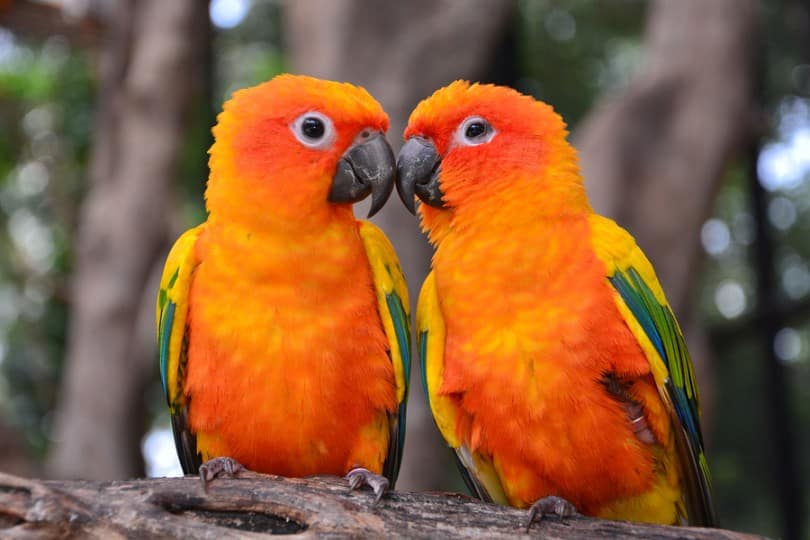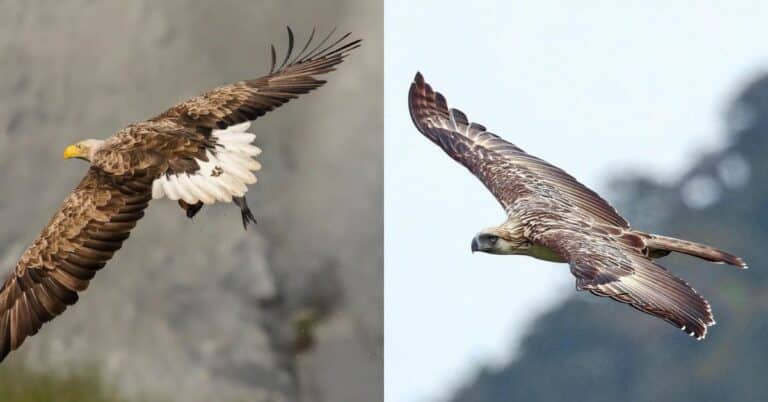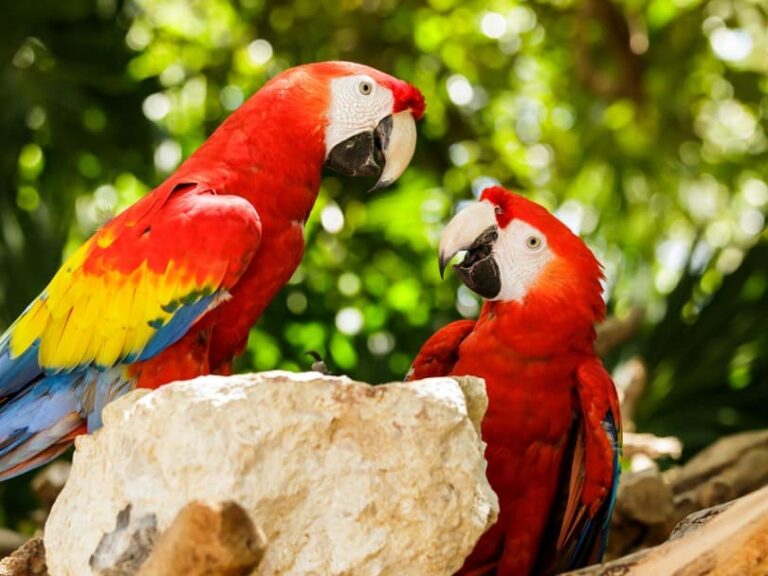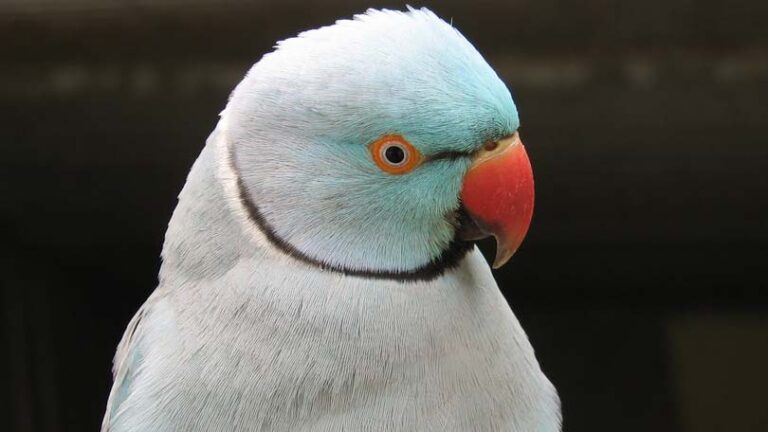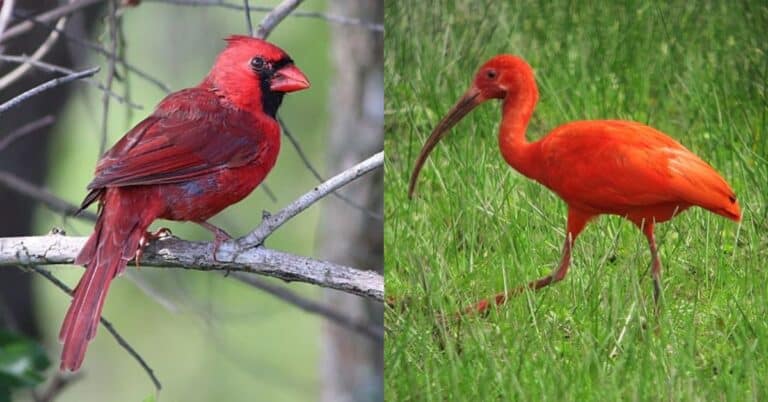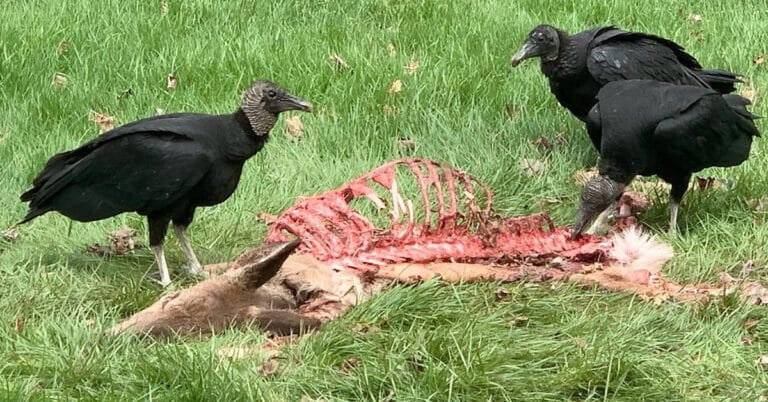Sun Conure
The Sun Conures or the Sun Parakeets are biologically termed Aratinga Solstitialis. These are medium-sized parrots that belong to the Psittacidae family and the Arini tribe. These yellow-colored pretty birds are endemic to the Southern parts of America. It is a preferred species in aviculture, as these birds are very active, vocal, and affectionate. It has become an extinct species due to excess captivity, pet trading, and loss of habitat.
Description
Sun parakeets are moderate-size parrots that attain a weight of around 110 g, and a length of around 30cm. The male and female Sun Conure looks similar. Hence, these species are termed sexually monomorphic. The adult bird has a yellow shaded crown, mantle, nape, and coverts with lesser wings. The yellow shade extends to the underwing covert, as well as to the chest. The belly and the face of these creatures are orange in color with a red splash near the ear area. The base part of the greater wing covert, primaries, and the tertials, which are not true remiges (found in the back portion of the wing) are shaded in green, whereas the primaries tips, secondary and the main parts of coverts are dark blue color.
The tail has a unique combination of olive green at the top and a rich blue at the tip. During flight, the feathers appear dark gray in color. The bill is black, and the eye ring is gray, which often turns into white color during a life in captivity. The legs are slender and gray in color. These birds look similar to the light billed Golden Parakeets.
The plumage of the juvenile Sun Conure is mainly green in color, and they look similar to the sulfur-breasted Parakeet juveniles. The versatile orange, yellow and red colored abdomen, back and head is acquired, when they reach the age of maturity.
Habitat
These Conure birds are endemic to smaller parts of north eastern regions of South America, Brazilian states like Southern Guyana, Suriname, Roraima (Northernmost Brazilian state) and French Guiana. It also roams like a nomad on the coast of the French Guiana. It is not clear, whether these birds have originated from Venezuela, but recently they have been seen in locations like Santa Elena De Uairen (small Venezuelan city at the crossroads of the borders with Brazil and Guyana). It may be present in Para and Amapa (Both North Brazilian states), but it is not yet confirmed. The Conures found in the areas near the Amazon River situated in Brazil are mostly the Sulfur-breasted Parakeets.
Reproduction
The male and the female Sun Conure look similar. They sexually mature by the age of one to two years. The wild Sun Conures nest in the cavities or hollows of the palm trees. While breeding at home, you can provide a clean and comfortable nest box. These birds are easy to breed in a nest box suitable for cockatiel size, which should be 12 x 12 x 12 inch. The female bird lays around 2 to 4 eggs in each clutch, which she incubates them for 23 to 27 days. The male bird stands guard nearby or inside the nest box, when the female bird is incubating the eggs. Till 8 weeks, the parents care for the juveniles, after which they fly independently and leave the nest.
Behavior
These Sun Conures are emerging as a preferred pet bird due to its mingling and social behavior. They display a lot of interest in interacting with humans. The wild Sun Conures form colonies, where ever they prefer to stay. Hence, as a pet, they do not prefer to stay alone. They enjoy the owner’s or other bird’s company. They are very playful and active birds. They prefer wooden toys to play and chew. They are very athletic in nature, they like to climb the bars and hang upside down with one foot at the top of the cage. Though they are not very perfect talkers, they can speak a few words with simple training. They usually become aggressive during the breeding period. They also scream and create a nuisance, if not given enough attention and care.
Sun Conure at Home
Diet
In the wild, these birds prefer nuts, fruits, vegetables and seeds. Special care should be given while deciding their diet. At home, they should be provided with a healthy and nutritious diet and at the same time, a variety of food should also be introduced to prevent boredom. A pellet diet is found suitable for these birds. You can buy a good quality pellet diet mix that is free from artificial colors and added preservatives. Other than this, Sun Conures should also be provided with fruits and vegetables on a daily basis.
Cage
Sun Conures are very enthusiastic and active birds. They prefer a spacious cage to move around and flap their wings. They like to swing, climb and play inside the cage. The minimum cage size should be around 24″ x 24″ x 30″. This cage should have horizontal bars for them to climb and exercise. But the cage bars should not have a spacing of more than 1inch, or the bird can get injured by choking its head or feet. The perfect material for your Sun Conure Cage is stainless steel, as these birds will chew the wooden cages. Also make sure that the stainless steel cage is painted with non toxic paint. A rectangular cage or a dome shaped cage is more suitable, but ensure it has more height than width. Cover the floor of the cage with normal newspaper for easy cleaning.
Place two to three perches of different size and shapes for the Conure bird. The perches should be thick enough for the pet to stand without losing the balance. There should also be enough space to keep water and food dishes. The cage should be placed away from direct sunlight or air vents.
Care
The perches and the cage should be disinfected by using bleach water regularly, but make sure to place your pet in a separate room while cleaning. The fumes of the bleach water can be toxic to these birds. Before placing your bird inside the cage, dry the cage under the sun till the bleach smell is completely gone. Regularly provide and change the toys of these pets, so that they won’t get bored. Provide a regular supply of fresh water in an accessible manner for these birds. Clean the dishes used for providing food and water daily with mild detergents. Spend some time with your pet, and allow it to stay out of the cage for some time.
Health Condition
Basically a healthy diet and clean environment will keep the Sun Conures away from most of the diseases and increase their life expectancy. But still, some Sun Conures can be prone to feather picking ailment. A complete medical test can be done to rule out the reason for this disease. These birds are also prone to Proventricular Dilatation Disease, Psittacosis, Psittacine Beak and Feather Disease, Aspergillosis and beak malocclusion. A regular check up with your pet’s vet is recommended.

Having discovered a fondness for insects while pursuing her degree in Biology, Randi Jones was quite bugged to know that people usually dismissed these little creatures as “creepy-crawlies”.

